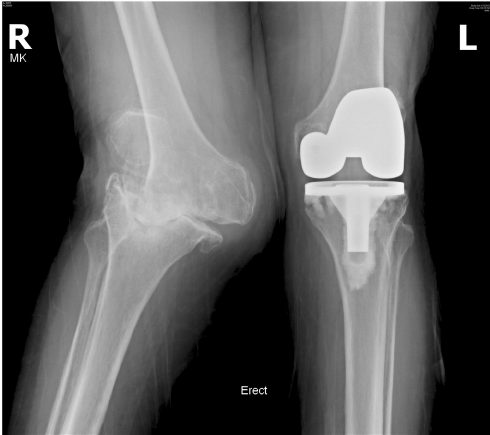How Much Bone is Removed During Total Knee Replacement Surgery?
If you're considering total knee replacement surgery, you probably have questions about what exactly happens during the procedure. One of the most common concerns patients have is understanding how much of their natural bone will be removed. The good news is that the amount of bone removal is actually much less than most people imagine.
Let's break down exactly what happens during total knee replacement surgery and put your mind at ease about this life-changing procedure.
Understanding Total Knee Replacement Surgery
Total knee replacement surgery involves removing damaged cartilage and bone from the surface of your knee joint. These damaged areas are then replaced with artificial components made of metal and plastic to restore function and eliminate pain.
The procedure is designed to:
- Alleviate chronic knee pain
- Improve joint mobility and stability
- Restore your ability to perform daily activities
- Provide long-lasting relief from arthritis symptoms
Here's an important fact: Despite being called "total" knee replacement, this surgery is more accurately described as a surface replacement. Your surgeon doesn't remove your entire knee – they only work on the joint surfaces.
The Reality: Minimal Bone Removal
The amount of bone removed during total knee replacement is surprisingly minimal. Surgeons remove only the damaged portions of the knee joint while preserving as much healthy bone as possible.
Specifically, surgeons remove approximately 5-10 millimeters of bone from the joint surfaces. That's less than half an inch of bone material.
What Gets Removed From Each Bone
Your knee joint consists of three main bones, and here's what happens to each during surgery:
Femur (Thigh Bone)
- A thin layer of damaged bone is removed from the end of the femur
- The bone is carefully shaped to accommodate the metal femoral component
- Only the damaged cartilage and minimal bone are taken away
Tibia (Shin Bone)
- A small portion of the upper tibia is shaved off
- This creates a flat, stable surface for the tibial component
- The surgeon ensures a secure fit for optimal stability
Patella (Kneecap)
- The underside may be smoothed and resurfaced
- A plastic component might be attached to reduce friction
- In some cases, the patella is left untouched depending on its condition
What Determines How Much Bone is Removed?
The exact amount of bone removal varies from patient to patient. Several factors influence this decision:
Severity of Joint DamagePatients with more advanced arthritis may require slightly more bone removal to eliminate all damaged tissue.
Type of Prosthetic UsedDifferent implant designs require specific bone preparation techniques.
Patient's Bone DensityThe quality and density of your existing bone affects surgical planning.
Overall Joint ConditionThe presence of bone spurs or other complications may influence the approach.
Advanced Surgical Techniques Minimize Bone Loss
Modern orthopedic surgeons use sophisticated tools and techniques to ensure precise bone removal:
- Advanced imaging technology helps plan the exact amount of bone to remove
- Computer-assisted surgery provides enhanced precision
- Specialized cutting guides ensure accurate bone preparation
- Custom implants may be used for optimal fit with minimal bone removal
Benefits of Minimal Bone Removal
This conservative approach to bone removal offers several important advantages:
Structural IntegrityPreserving healthy bone maintains the natural strength of your leg bones.
Better Implant FitCareful bone preparation ensures your prosthetic components fit securely and function properly.
Faster RecoveryLess bone removal typically means quicker healing and rehabilitation.
Long-term SuccessPreserving bone health is essential for the long-term success of your knee replacement.
Future OptionsMaintaining bone stock keeps options open for potential future procedures.
What About the Ligaments?
During total knee replacement, some ligaments are also addressed:
- The anterior cruciate ligament (ACL) is always removed
- The posterior cruciate ligament (PCL) may be kept or removed depending on the implant type
- The collateral ligaments on the sides of your knee are always preserved
- The menisci (cartilage cushions) between the bones are removed
Comparing Total vs. Partial Knee Replacement
If you're eligible for partial knee replacement, even less bone is removed:
Partial Knee Replacement
- Only one compartment of the knee is replaced
- Significantly less bone removal required
- Faster recovery time
- Not suitable for all patients
Total Knee Replacement
- All three compartments are addressed
- More comprehensive solution for widespread arthritis
- Longer-lasting results for severe joint damage
Recovery and Long-term Outcomes
The minimal bone removal in modern knee replacement surgery contributes to excellent outcomes:
Short-term Benefits
- Reduced surgical trauma
- Less post-operative pain
- Faster initial recovery
Long-term Advantages
- Implants typically last 15-20 years or more
- Restored mobility and function
- Significant pain relief
- Return to many activities you enjoy
Addressing Common Concerns
Many patients worry about losing too much of their natural bone. Here are the facts:
"Will my leg be shorter after surgery?"No. The artificial components are designed to match your original joint dimensions.
"Will I have enough bone left for future procedures?"Yes. The minimal bone removal preserves options for potential revision surgery decades later.
"Is the bone removal permanent?"Yes, but the artificial components provide excellent function that often exceeds your pre-surgery capabilities.
Making an Informed Decision
Understanding the minimal nature of bone removal in total knee replacement can help ease concerns about this procedure. The surgery is designed to:
- Remove only what's damaged
- Preserve what's healthy
- Restore pain-free function
- Provide long-lasting results
If you're experiencing chronic knee pain that limits your daily activities, total knee replacement may be an excellent option. The small amount of bone removed is a worthwhile trade-off for the significant improvement in quality of life most patients experience.
When to Consider Surgery
Consider discussing total knee replacement with your orthopedic surgeon if you experience:
- Persistent knee pain that interferes with daily activities
- Stiffness that limits your range of motion
- Difficulty walking, climbing stairs, or getting up from chairs
- Pain that continues despite conservative treatments
- Knee instability or "giving way"
Remember, the decision for surgery should always be made in consultation with a qualified orthopedic surgeon who can evaluate your specific situation and recommend the best treatment approach.








